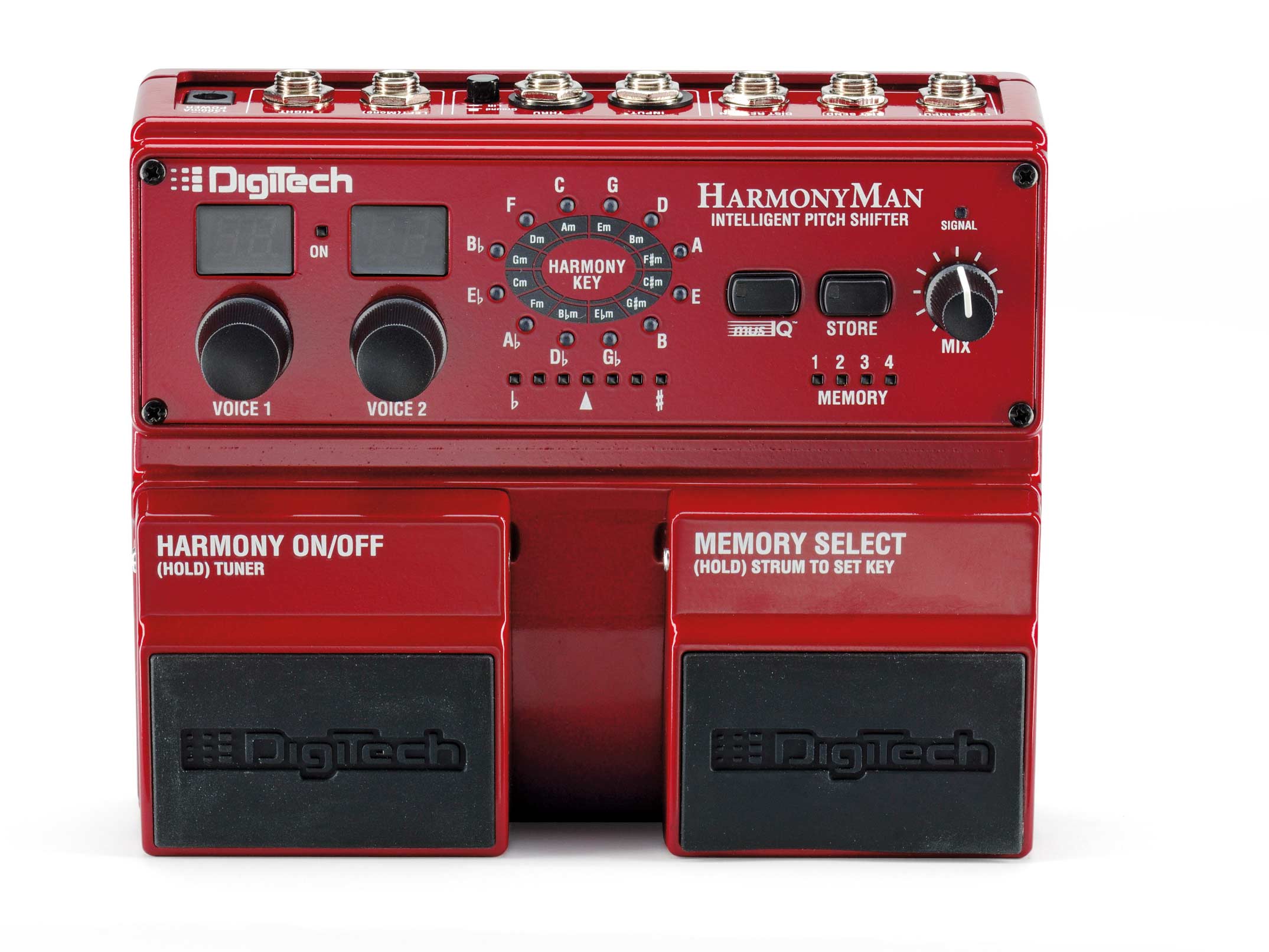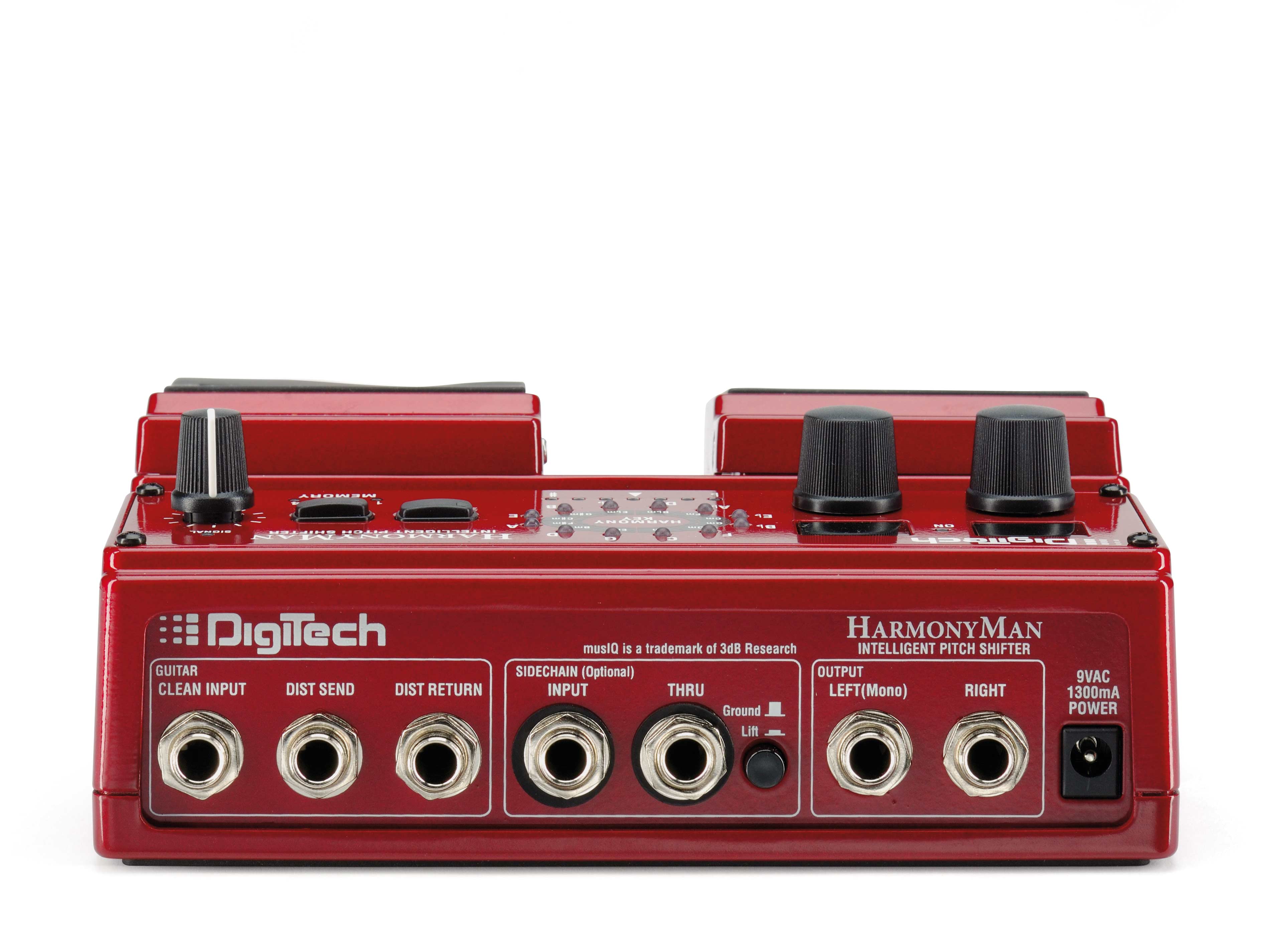MusicRadar Verdict
This has to be the simplest and most accurate guitar harmoniser to date, delivering excellent and effective results from a rugged, competitively priced package.
Pros
- +
High quality construction. Visual display. Excellent sounds and price.
Cons
- -
Wide voicing choice can cause some confusion concerning which is best for the job – otherwise very little.
MusicRadar's got your back

HarmonyMan

HarmonyMan
American effects specialist DigiTech has long been at the forefront of intelligent pitch shifting, producing a succession of harmony-generating devices since the eighties.
The company has constantly refined and improved the art of creating artificial harmonies, making the process appropriately easier and user friendly.
Even so, until recently a modicum of musical knowledge concerning keys and scales was required to obtain the best results on voices or instruments, so many DigiTech designs were accordingly aimed at MIDI-equipped keyboard players.
This situation changed significantly last year with the launch of the Vocalist Live 2 and Live 4 pedals, which enabled guitarists to generate accurate and authentic sounding vocal harmonies simply by strumming suitable chords at the same time as singing.
Now DigiTech has put these smart multi-voicing abilities to purely instrumental use via the appropriately named HarmonyMan stompbox.
This uses the company's exclusive musIQ note detection and chord recognition technology to automatically add various options of one or two harmony parts to the original guitar lead line, as well as provide other pitch shifted effects.
The principal process involved is that the pedal analyses the chords being played prior to a solo and these then determine the correct harmonies that can accompany the latter.
Overview
True to DigiTech tradition, the HarmonyMan is US-made - something of an increasing exception in these days of Chinese product domination. It adopts the twin-treadle format already employed on that other 'male' in the floor effects range, the JamMan looper.
The newcomer is an equally solid piece of work, with a cast metal casing capable of withstanding almost any on-stage abuse. The unit's substantial weight ensures minimal movement underfoot, the non-slip factor further helped by super grip rubber strips on the base.
Dimensions are akin to a closely spaced pair of standard sized stompers, although the HarmonyMan sits significantly higher. The sloping front half hosts two sizeable square switches, while the business section is safely out of the way, occupying the rear half.
Contrasting its impressive capabilities, the HarmonyMan's layout is comfortingly minimal. The main feature is the Harmony
Key display, an elliptical LED array presented in circle of fifths formation, with musically related keys sited next to each other.
When the musIQ function is engaged, the display indicates the automatic harmony key determined by the most recently played chords, constantly updating its response accordingly as these change. With musIQ disabled, the last manual key is shown and used to produce scale-based harmonies.
A pair of multi-position rotary selectors governs two independent voices. Both offer two intelligent shifting modes (triad-centred and scalic) that move to compliment chord patterns, plus fixed (chromatic) and detune alternatives.
All selections are shown in the accompanying display windows and options for each include third and fifth harmonies above or below, octave up or down, a two octave drop, unison, 12 semi-tone pitch shifts either way plus four detune variations.
A mix pot provides a variable blend of the original guitar signal and the additional harmony voices, with the balance ranging from no effect to effect-only.
Touch buttons select the musIQ and store facilities, the latter committing current control settings to a choice of four memories, these user presets being recalled via the relevant Memory Select footswitch.
The latter is also used for manually setting the correct key and scale, rather than the musIQ automatic alternative. This is achieved by strumming a chord while holding down the footswitch. Output is actually muted during this process, making it ideal for use on songs that start with a solo.
Its partner pad turns the harmony function on or off, the latter mode being true bypass. Continued pressure engages the onboard tuner, with the Voice 1 display window showing the appropriate note, while an independent row of LEDs shows flat or sharp status.
The rear panel is fully occupied by standard jack connectors. The first is labelled clean input, as the HarmonyMan requires an unadulterated audio signal for chord recognition.
Next come the send and return sockets for the distortion loop that enables an appropriate pedal to be connected, so harmonies can be dirtied up as required. The sidechain input typically accommodates a second guitar providing the relevant rhythm work and this then creates the harmonies for the solo performer, rather than the latter.
Adjacent to this jack is thru, which delivers a clean feed to the rhythm player's amplifier, while an accompanying ground lift switch is included to eliminate potential hum problems. Last in line are the main left and right outputs, the former being used for mono operation.
Unlike DigiTech's single stompers, the HarmonyMan employs mains-only operation and the necessary nine-volt wall wart power supply is included in the package as standard.
Sounds
Connecting up is simple and setting the optimum operating level is equally easy. Next comes a tuning check, as correct pitch is important to ensure the best results. With these tasks accomplished it's time to select voicings via the Voice 1 and 2 controls and start strumming.
Once the key and scale are automatically established, the harmony footswitch can be operated to add either one or both voices to the lead line.
Their volume can be varied against the latter via the mix control. Turning this all the way up leaves just the harmonies audible, creating somewhat odd results, but revealing their excellent aural quality and tracking abilities.
With the balance set to a more realistic ratio, the additional voices blend well with the original, creating a big and impressive sound.
The wide-ranging menu ensures plenty of fun finding the right choice for the job, not to mention a degree of confusion.
Even so, the HarmonyMan proves to be pleasingly intuitive in operation and it's nice not to have to think about music theory and instead simply enjoy the very appealing end results.
Using the memory select it's possible to progressively add the second harmony, creating a layering effect that's great for building a solo.
DigiTech's Vocalist Live pedals have proved a resounding success and the HarmonyMan should also prove popular.
However, guitar harmonies aren't as essential as the vocal variety and need to be applied sparingly and tastefully to ensure maximum impact.
This difference makes the HarmonyMan more of an effects pedal than its vocal equivalents, so the value for money factor is accordingly lessened.
That said, this super sturdy pedal offers a lot of performance for comparatively little and has to be the most user-friendly guitar harmoniser around, not to mention the best sounding. This combination must make it a winner for any player who fancies an aural threesome!
With its latest free update, Ableton has finally turned Note into the app I always wanted it to be
Technically capable, but struggle to make your tunes sound musical? 5 simple music theory hacks to make your tracks stand out
"Despite its size, it delivers impressive audio quality and premium functions as well as featuring a good selection of inspired sounds": Roland GO:Piano 88PX review









